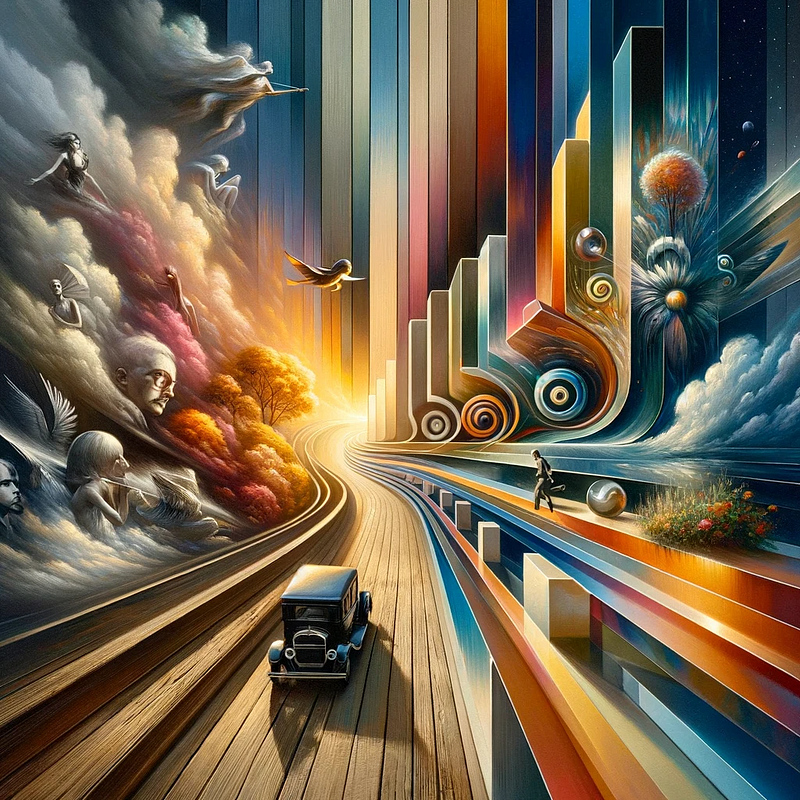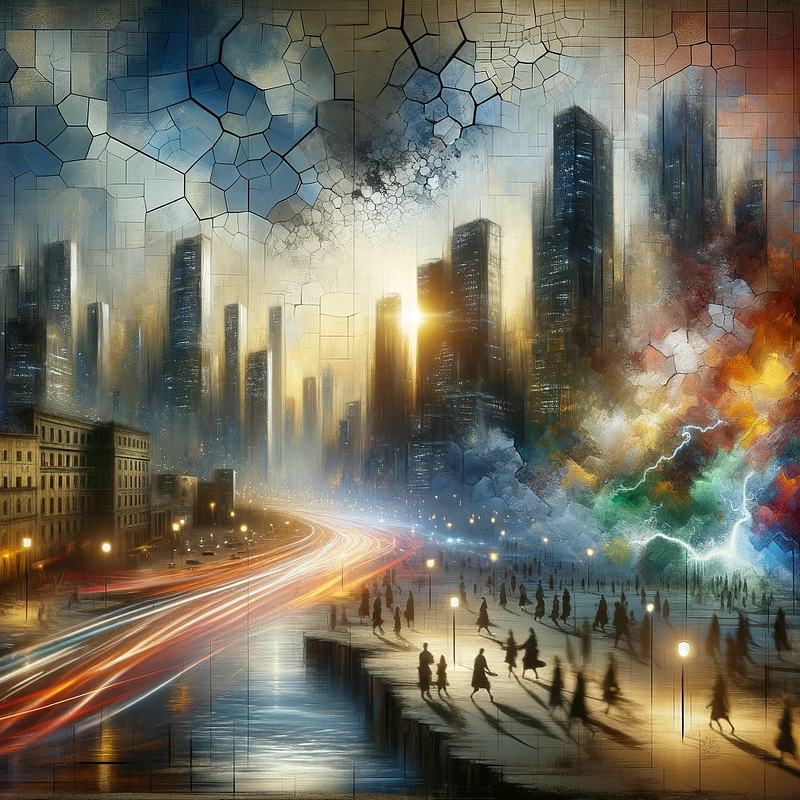Understanding the Echo Era: Cultural Stagnation Unveiled
Written on
Cultural Context: The Echo Era
“The future is already here — it’s just not evenly distributed.” — William Gibson

Cultural Dynamics: A Standstill
Beginning in the 2010s, the cultural atmosphere underwent a subtle yet significant transformation that has led to what is now termed “Stuck Culture.” This concept refers to a stagnation in cultural progress, where nostalgia dominates and the new often mirrors the old, resulting in a feeling of déjà vu. Although the internet has revolutionized connection and access to information, it paradoxically contributes to this cultural impasse. This discussion examines the reasons behind our cultural environment feeling ensnared in a cycle that reflects more on history rather than innovating for the future. The inspiration for this analysis was drawn from Paul Skallas’ blog post on the stagnant nature of culture.
Distinct Decades: A Comparative Look
To appreciate the uniqueness of our current cultural moment, a comparison with past decades is necessary. Each decade from the 1950s to the 1990s showcased clear cultural identities:
- 1950s: Marked by post-war prosperity, rising consumerism, the birth of rock 'n' roll, and a focus on family values and the 'American Dream'.
- 1960s: Characterized by the rise of youth culture, the emergence of counterculture movements, and vibrant psychedelic fashion, represented by bands like The Beatles and The Rolling Stones.
- 1970s: Continued counterculture influences, diversification in music genres (such as disco, punk, and early hip-hop), and increased environmental consciousness.
- 1980s: An economic boom accompanied by the rise of MTV, bold fashion statements, and a variety of music genres.
- 1990s: The rise of grunge and alternative rock, the early influence of the internet, casual fashion trends, and an increased focus on multiculturalism and eco-awareness.
In stark contrast, the post-2010s period lacks such distinct cultural identifiers, leading to a blending and recycling of past trends that foster a sense of cultural inertia.

Risk Aversion: A Cultural Impediment
A significant contributor to this cultural stagnation is the risk-averse nature of industries. Large corporations, when launching new products, often prefer to rely on established successes. This trend has stifled innovative ideas in mainstream culture, resulting in an over-reliance on sequels, remakes, and adaptations, particularly in creative sectors such as film and gaming.
Economic Insights:
- Proven Strategies: Companies often opt for data-driven decisions, repeating successful patterns.
- Sequel Mentality: There is a tendency to continue successful franchises rather than explore new concepts.

Niche Culture: A Fragmented Landscape
While the internet provides a platform for diverse interests, it has also led to a fragmented cultural landscape. Online niche communities, ranging from subreddits to Discord groups, cater to specific tastes. This division, while fostering creativity in smaller groups, has paradoxically rendered mainstream culture stagnant.
Cultural Fragmentation:
- Long Tail of Interests: The internet meets a wide array of unique interests, resulting in numerous micro-communities.
- Diluted Creativity: Although creative expression is flourishing, its influence on mainstream culture is diminished due to this dispersion.

Familiarity vs. Novelty
Consumer preferences are influenced by various psychological factors, such as the Mere Exposure Effect, which suggests that we tend to favor familiar things. However, the desire for novelty remains essential. This dynamic gives rise to the "3% rule" in cultural products — adjusting just enough to feel fresh without alienating the audience.
Psychological Considerations:
- Mere Exposure Effect: Familiarity breeds preference, but a desire for newness persists.
- 3% Rule: A strategy to achieve a balance between familiarity and novelty in cultural products.

Innovation in Decline: The Cultural Trap
The convergence in creative fields, leading to the phenomenon of "Stuck Culture," is complex. Economic factors, psychological tendencies, and the internet's influence all contribute to this cultural convergence. While certain areas, such as the evolution of running shoes, showcase significant innovation, these instances are exceptions in a broader trend of cultural homogenization. It's important to consider why some industries continue to innovate. In sectors like sports and technology, performance enhancements can provide a distinct competitive advantage, explaining the ongoing evolution within these fields.
Convergence in Creative Expression:
- Blending of Art Forms: Music, film, and gaming increasingly share aesthetics and narratives.
- Technological vs. Human Adaptation: The rapid pace of technological advancement contrasts with the slower rate of human psychological adaptation, contributing to the cultural loop.

Global Perspective: A Caveat
It is crucial to note that the “Stuck Culture” phenomenon is primarily observed within North American and, more broadly, Western contexts. The cultural stagnation discussed may not necessarily reflect global trends. In fact, other cultures worldwide may be undergoing significant transformations, showcasing vibrant evolutions in cultural identities, styles, and innovations.
In non-Western societies, the interaction between traditional values and modern influences, along with unique socio-political and economic circumstances, likely fuels a dynamic cultural landscape. This diversity emphasizes the necessity of viewing cultural evolution from a global perspective, acknowledging that while some regions may exhibit signs of “Stuck Culture,” others are experiencing substantial cultural developments.
The exploration of cultural stagnation presented here should be understood as a viewpoint primarily focused on Western societies. It invites broader inquiries into how various cultures evolve and interact in an increasingly interconnected world, serving as a reminder of the diverse and ever-changing tapestry of global culture.
The Era of The Echo Conference: A Perspective on Cultural Dynamics
This video discusses the ongoing trends that contribute to cultural stagnation, exploring the nuances of the Echo Era.
Echo Lake - 'Era' (official video): A Visual Representation
This official music video encapsulates the sentiments of the Echo Era, reflecting its themes and cultural dynamics.